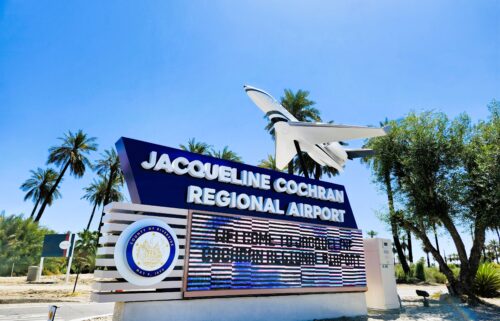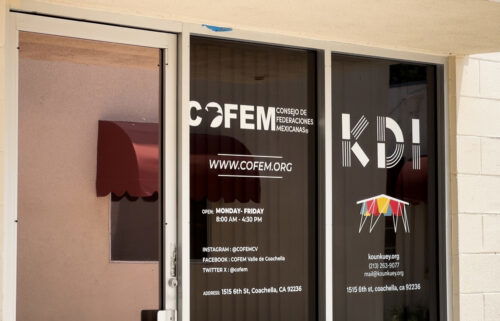The term ‘Asian American’ has a radical history
By Harmeet Kaur, CNN
Asian American is a term that is both ambitious and contentious, depending on who you ask.
The label today encompasses more than 22 million people with roots in more than 20 countries, each with distinct cultures, histories, languages and ethnic groups. Those under the Asian American umbrella include people who have been in the US for generations as well as recent immigrants, many of whom have never thought of themselves as “Asian.”
The label continues to inspire discourse and debate among the people it’s purported to describe. When it’s used as a demographic marker, as it so often is, the limitations of a single category for such a vast and diverse population quickly become clear.
But despite its imperfect nature, scholars of Asian American history say that the term’s origins suggest that it has immense potential, too.
Student activists coined the term in the ’60s
Asian immigrants started coming to the US in significant numbers in the mid-19th century, working as miners, farmers, railroad builders and in other low-paying industrial jobs. Those early immigrants were primarily Chinese, Japanese and Filipino, with smaller numbers of Koreans and South Asians arriving in the late 1800s and early 1900s.
Though these groups worked under similar conditions and each faced exclusionary policies, they didn’t see themselves as connected, said Daryl Maeda, a professor of ethnic studies at University of Colorado Boulder. They came from countries that were often at odds with each other, and as a result, many tended to identify with their specific ethnic group. When they did come together politically, Maeda said, it was largely along ethnic or class lines.
That shifted in the late 1960s with the emergence of the Black Power movement and mounting opposition to the Vietnam War.
In 1968, Yuji Ichioka and Emma Gee, two graduate students at the University of California, Berkeley, formed the Asian American Political Alliance (AAPA) — believed to be the first use of the term Asian American.
Adopting the ideals of racial pride and self-determination pioneered by the Black Power movement, Ichioka, Gee and others from Chinese, Japanese, Filipino and Korean backgrounds united around their opposition to the Vietnam War. Their specific objection: That Asian people were being killed.
“There were so many Asians out there in the political demonstrations but we had no effectiveness,” Ichioka said, as documented in a book by UC San Diego ethnic studies professor Yến Lê Espiritu. “Everyone was lost in the larger rally. We figured that if we rallied behind our own banner, behind an Asian American banner, we would have an effect on the larger public.”
The term was a rejection of slurs that had been imposed on people of Asian origin and of stereotypes that painted them as passive. The Asian American Political Alliance went on to join forces with other social movements, including the Third World Liberation Front, the effort to release imprisoned Black Panther Party leader Huey Newton and the fight to save San Francisco’s International Hotel. And the newly formed Asian American movement spread, inspiring other campuses in the US to launch their own chapters of AAPA.
Though much of this political organizing was taking place on college campuses, the movement did extend beyond students, Maeda said. In 1969, two older Japanese American women in New York formed an organization called Asian Americans for Action (AAA), with similar goals of opposing racism and the war in Vietnam.
Over the next few decades, the term Asian American began coming into wider use. In 1978, Congress passed a resolution to establish an “Asian/Pacific American Heritage Week,” which later became “Asian/Pacific American Heritage Month.” And in 1982, Asian Americans from different backgrounds came together again to rally against the killing of Vincent Chin, a Chinese American beaten to death by auto workers in Detroit who apparently mistook him for Japanese.
The term is work in progress
As bold as the idea of a unified Asian America was, a piece of landmark legislation would soon complicate that notion.
The passage of the Immigration and Nationality Act of 1965 ushered in huge waves of South and Southeast Asian immigrants in the decades that followed, fundamentally changing the demographic makeup of Asian America. The late ’70s would also bring an influx of Southeast Asian refugees. And as the demographics of Asian America shifted, the challenges of the term became evident.
Some South Asians and Southeast Asians have argued that the term tends to be synonymous with East Asians, while obscuring their own realities and experiences. And a 2016 survey from the research firm AAPI Data found that only 16% of Asian Americans thought of themselves as Asian American. Instead, a majority identified with their specific ethnic group.
In other words, in trying to be inclusive of everyone, it sometimes falls short. (The term AAPI, or Asian Americans and Pacific Islanders, has come into wider use in recent years, though it has faced similar criticism for obscuring the specific histories and disparities faced by Pacific Islanders.)
But the label “Asian American” can be a useful tool to unite communities against oppression, Maeda said. Asian Americans came together in the face of discrimination against South Asians after 9/11, and communities are once again rallying against the increasing racism and violence many Asian Americans have been experiencing during the pandemic. Coming together in this manner, he said, is a fundamentally Asian act.
“The key is to understand that Asian American identity is a political stance,” Maeda said. “Being Asian American is to take a stand against racism and a stand for solidarity among people of Asian ethnicity and with other racialized people in the United States and abroad.”
As recent attacks have prompted increased attention on Asian American communities, Asian Americans are having more conversations about how to be inclusive of everyone while acknowledging differences. Ultimately, Maeda said, it’s the people who give the term meaning, and the label’s storied history might offer a path forward.
“The story of the term Asian American is ongoing. Its ending has yet to be written,” Maeda said. “As time goes on, I hope that we will continue to see the term continue to be used in new and different and novel ways as the needs of communities evolve and new constituencies arise.”
The-CNN-Wire
™ & © 2022 Cable News Network, Inc., a WarnerMedia Company. All rights reserved.



